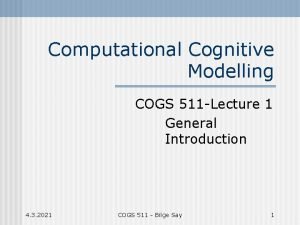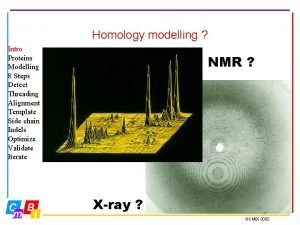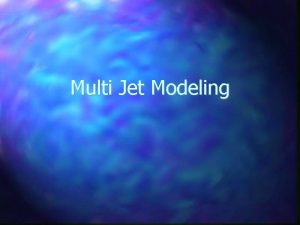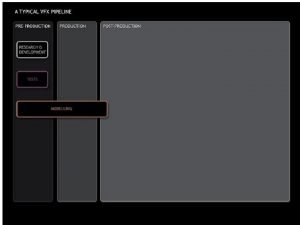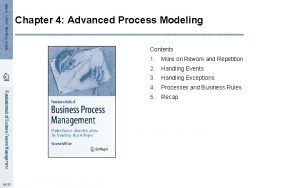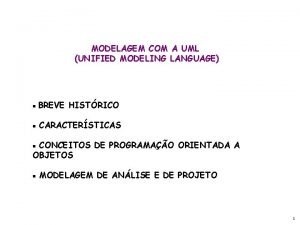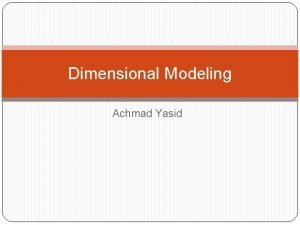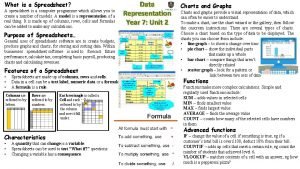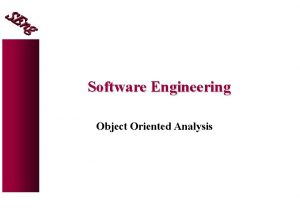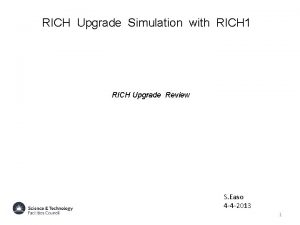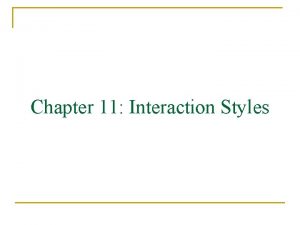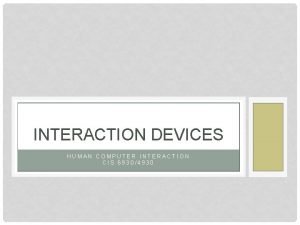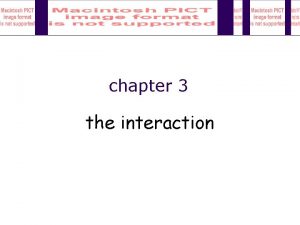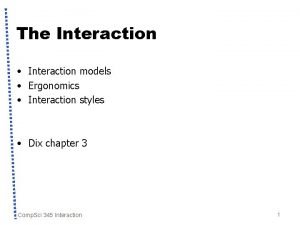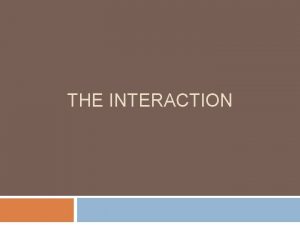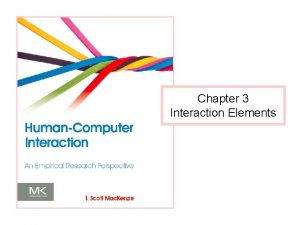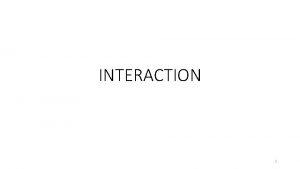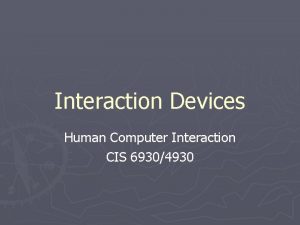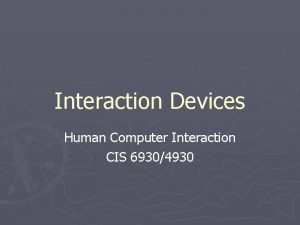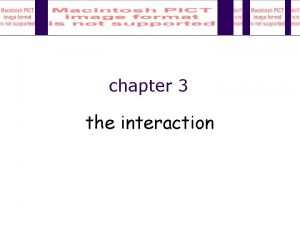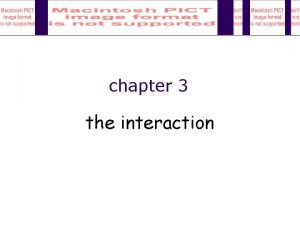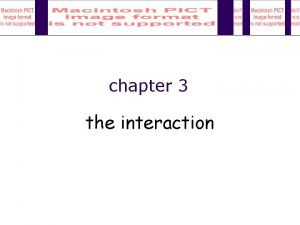Lecture No 27 Modelling rich interaction Modelling Rich



















- Slides: 19

Lecture No. 27 Modelling rich interaction

Modelling Rich Interaction • status–event analysis • low intention and sensor-based interaction

status–event analysis • events – things that happen • e. g. alarm bell, beeps, keystrokes • status – things that are represented • e. g. screen display, watch face, mouse position • unifying framework – system – user (formal analysis) (psychology & heuristics)

rich set of phenomena input output internal external events status keypress beep interrupt time mouse position display document state temperature Most notations only deal with subset of these e. g. event-in/event-out

Design implications • actual/perceived log… matches application timescale? • too slow – response to event too late e. g. , power plant emergency • too fast – interrupt more immediate task e. g. , stock level low

email delivery

email delivery (ctd) • mail has arrived! • timeline at each level • Perceived event in minutes – not guaranteed alternative explicit examination audible bell – – timescale hours/days seconds but want minutes – guaranteed

Screen-button – HIT Delete brown fox quick the quick brown

Screen button – MISS Delete the quick brown quick

HIT or a MISS? HIT CLICK identical screen feedback MISS semantic feedback only closure eye moves elsewhere one solution add simulated click

Groupware Task Analysis GTA – conceptual framework, tools, elicitation techniques Used_by rich model of task world Object rich ontology – human roles for collaboration – physical and electronic objects Event Triggers Uses Task Performed_by Subtask Triggers Subgoal Role Subrole Is Responsible Has Goal Contains Plays Agent

low intention and sensor-based interaction

car courtesy lights • turn on – when doors unlocked/open • turned off – after time period – when engine turned on driver's purpose is to get into the car incidentally the lights come on

shopping cart • goods in shopping cart analysed – e. g. Amazon books • used to build knowledge about books – people who like X also like Y • used to give you suggestions – “you might like to look at …”, “special offer …” my purpose to buy a book incidentally shown related titles

the intentional spectrum intentional expected incidental press light switch walk into room expecting lights to switch on walk into room … unknown to you … air conditioning increases

fluidity intentional co-option expected users explicitly use behaviour e. g. open door for lights comprehension incidental users notice, form model then rely on behaviour

interaction models • intentional cycle – Normal execution/evaluation loop • some exceptions – multiple goals, displays, opportunistic • guidelines – feedback, transparency intention goal execution evaluation system

designing a car courtesy light • available input –door open, car engine • desired output –light! • identify scenario • label steps 0 don’t care +, ++, … want light –, ––, … don’t want it • legal requirements light off whilst driving • safety approaching car 1. 2. 3. 4. 5. 6. 7. 8. 9. 10. 11. 12. 13. 14. 15. safe? light advertises presence deactivate alarm walk up to car key in door open door & take key get in close door adjust seat find road map look up route find right key in ignition start car seat belt light flashes fasten seat belt drive off illegal to drive with interior light on 0 – + ++ 0 + ++ + – 0 0 + –––––

architectures for sensor-based systems? inference data fusion raw sensors data reduction control context model user actions
 Richer interaction in hci
Richer interaction in hci Flight level
Flight level 01:640:244 lecture notes - lecture 15: plat, idah, farad
01:640:244 lecture notes - lecture 15: plat, idah, farad Cognitive modelling
Cognitive modelling Homology modelling steps
Homology modelling steps Sd3 security framework
Sd3 security framework Multi jet modelling
Multi jet modelling What is technological modelling
What is technological modelling Climate based daylight modelling
Climate based daylight modelling Mechanical system modeling examples
Mechanical system modeling examples Universal modeling language
Universal modeling language Pipeline risk assessment software
Pipeline risk assessment software Modelling
Modelling Advanced process modeling
Advanced process modeling Relacionamentos uml
Relacionamentos uml Modelling madness what's new
Modelling madness what's new Tujuan dari dimensional modelling
Tujuan dari dimensional modelling Power platform data modelling
Power platform data modelling What is a spreadsheet
What is a spreadsheet Class responsibility collaborator modelling
Class responsibility collaborator modelling



